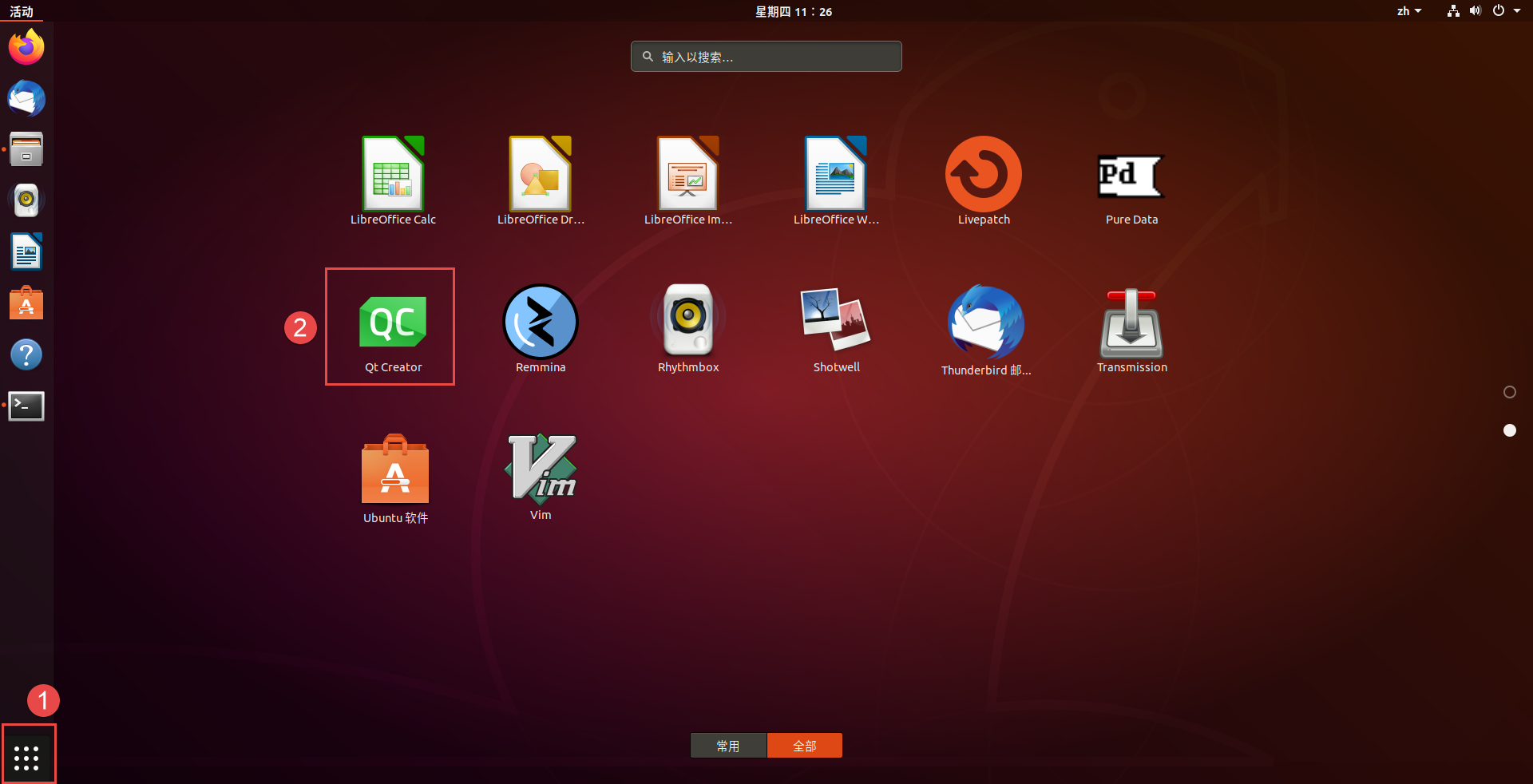
When the user changes the window size, it can be disorienting if a button scales with the resizing. Size policies are important! When building bigger GUIs it will be increasingly important to define how widgets behave visually within their layout.
#Qt creator design code
It will help a lot when you access them in the code later on, which becomes more important with a multitude of widgets. Try out different layout types and add a few widgets to see the behavior.Įvery widget needs a unique name property defined in QObject.objectName! It will auto-name your widgets and while it's not required it's highly recommended to use structured naming for widgets. well, layouting (to keep consistent element spacing when resizing etc.). Important Qt Designer conceptsĮvery container widget needs a layout!. Quick access to different layouts for container widgets, see its importance right below. and finally QDialogButtonBox, which has mostly functional properties, e.g.QWidget, which exposes multiple properties, mostly layout related.QObject, which only exposes the objectName property and will be widget identifier in your code.the QDialogButtonBox is sub-classed from (in descending order): you can immediately see the inheritance tree for each widget by examining the tabs of the Property dialog.QDialogButtonBox for the OK/Cancel button group It gives you a whole lot more information though: So it's also a good reference to available widget properties to be modified. You didn't see any actual code yet, but these properties are accessible methods through the Python class of your GUI. 3 Property EditorĮach widget exposes a list of properties, like geometry or font, which you will find in this panel. when they are overlapping each other in the dialog. But sometimes it's good to see the hierarchy of widgets or select it from a list, e.g. You can click on widgets in your dialog to select them. There's also several custom QGIS widgets at the very bottom, which extend functionality of Qt widgets (like CRS picker). Drag a few widgets into your dialog and experiment a bit. In Qt, all GUI elements are classified as Widgets, which can have all kinds of actual UI functionality like buttons, containers or user input elements. For easier navigation, here's a quick breakdown of the Qt Designer interface: In the startup dialog, create a new Dialog with Buttons Bottom dialog, which will give you a bare-bone UI. It's the easiest way to create and alter UI files for QGIS plugins. Luckily, QGIS ships the program with its core on all operating systems and should be available as an executable on your computer. Qt Designer is an easy-to-use program to build UI's for Qt frameworks. QGIS 3 Plugins - Set up Plugin Repository.QGIS 3 Plugins - Geocoding with Nominatim Part 4 (Tests & CI).QGIS 3 Plugins - Geocoding with Nominatim Part 3 (Best Practices).QGIS 3 Plugins - Geocoding with Nominatim Part 2 (Interactivity).QGIS 3 Plugins - Geocoding with Nominatim Part 1 (First Steps).QGIS 3 Plugins - Signals and Slots in PyQt.This tutorial is part of our QGIS tutorial series: FastAPI – MVT Vector Tiles with Authorization fastapi.Map Matching in PostGIS with Valhalla and PL/Python postgis.Measuring Distances and Why Projections Matter postgis.Serving Digital Elevation Models postgrest.Run Valhalla with Docker on Ubuntu valhalla.Enable Elevation Support for Valhalla valhalla.Customized Routing for Pleasant Hiking pgrouting.Open Source Routing Engines And Algorithms An Overview.Plugin Development Reference Guide plugins.QGIS 3 Plugin Tutorial – Geocoding with Nominatim Part 4 (Tests & CI).Plugin – Geocoding with Nominatim Part 3 (Best Practices).Plugin – Geocoding with Nominatim Part 2 (Interactivity).Plugin – Geocoding with Nominatim Part 1 (First Steps).Geocoding Points with HERE Maps actions.QGIS 3 Plugin Tutorial – Background Processing.
#Qt creator design license
Nokia gratefully acknowledges these contributions to Qt Designer and all uses of Qt Designer should also acknowledge these contributions and quote the following license statements in an appendix to the documentation.

Some source code in Qt Designer is licensed under specific highly permissive licenses from the original authors.

Accessing Qt Designer's Extension Manager.Creating Custom Widgets for Qt Designer.Qt Designer's Signals and Slots Editing Mode.Components created with Qt Designer can also take advantage of Qt's signals and slots, and they can be previewed so that you can ensure that they will look and feel exactly as you intended. It allows you to design and build widgets and dialogs using on-screen forms using the same widgets that will be used in your application. Qt Designer is a visual tool for designing and building graphical user interfaces (GUIs) from Qt components.


 0 kommentar(er)
0 kommentar(er)
